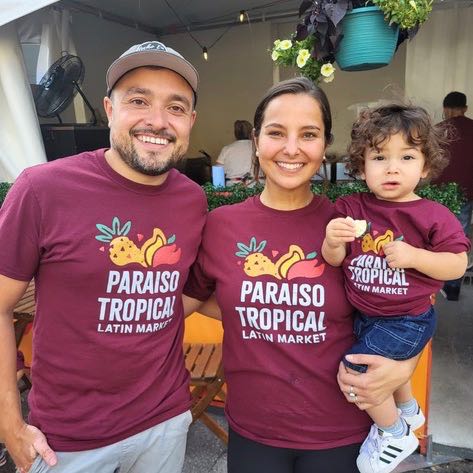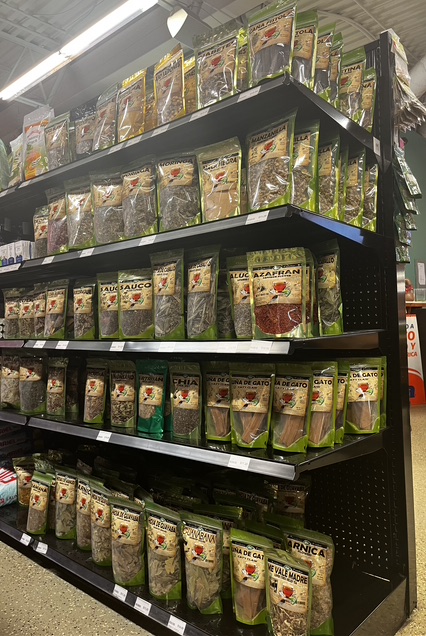
With a known history reaching back over 3,000 years, Ethiopia is Africa’s oldest independent country — and one of the oldest in the world. And thanks to its consistently warm and sunny seasons, its culture’s home-cooked food traditions have gone largely unchanged over the millennia.
“Back home, we have outdoor kitchens, so as you walk around you can just sniff and tell what your neighbours are eating for lunch. You can smell the spices and the coffee in the air,” says Nunu Desalgne, She grew up in Addis Ababa, Ethiopia’s capital city. When she moved to Canada in 2002, one of the first things she noticed was how much she couldn’t smell what her neighbours were cooking in their enclosed, ventilated kitchens.
“Traditionally, we are a very spiritual people, and food is very much associated with religion and all the things that go with it,” Desalgne says. “There was a fasting season, where people go completely vegan for a certain period of time, and different celebrations throughout the year. So growing up, people were always in the kitchen, helping out. At times, it could get frustrating, but food is home.”
With smell playing such a large role in the development and reinforcement of early and lifelong memories, to our minds, food really is home. So when someone like Desalgne makes a new home in a place completely unlike the one they grew up in, it’s jarring to the senses and soul — especially when they can’t find their favourite dish.
Desalgne’s favourite dish is Doro Wat, an Ethiopian national meal that’s too spicy for most westerners but just right for her. “It’s a whole-chicken stew that takes eight hours to cook traditionally, and they separate it into 12 pieces — if one piece is missing, it’s considered not done the right way. And I was a very picky child, so I only ate the wings. If anyone else ate the wings by mistake, then I wouldn’t eat the rest until my mom made another one,” she laughs.
Before moving to Edmonton permanently, Desalgne once visited Halifax to see her sister, who took her on a picnic. At her first Canadian grocery store she saw her first Candian rotisserie chicken, and “It was a little bit…weird,” she says. “I looked at the chicken like, ‘What is this?’”

She explains that in her culture’s kitchens, people making Doro Wat soak the chicken in lemon and salt and put it in a cooler for up to three hours (the prep process alone can take over four hours). That’s when they work on the sauce, which is made from up to 10 pounds of onions (or shallots) minced to a paste and cooked in clarified butter with various spices, including the paprika-like powder berbere. “We don’t use knives to separate it, the spices we use are very different, and we eat it with a flatbread, injera, that’s like a fluffy pancake, and this homemade cheese we call Ayib.”
Desalgne also adjusted to Canadian-style weekly shopping trips. Weird chicken aside, that day’s sisterly picnic prep felt normal in the sense that a day’s meal required a trip to the store. Buying for the week, let alone in bulk, was very foreign.
“We cook a fresh meal every day and, unless it’s a holiday, you don’t really have any leftovers,” she explains. “We go to the grocery store, or the market, every day to get fresh produce or fresh baking. I visited Costco for the first time in Halifax too, and it was overwhelming. I appreciate the convenience now, but I still love getting my specialty food items from different areas of the city — fresh baked goods, cheese, olives, spices.”
So where specifically does Desalgne find her specialty food items to recreate Doro Wat and other beloved meals from home? When she first moved here, the answer was: almost nowhere. But as Edmonton’s welcomed more and more newcomers over the subsequent 20-plus years, more and more specialty stores have popped up, including Desalgne’s Habesha African Market. She also recommends Elsafadi Brothers Mediterranean Supermarket, Kasoa Tropical Food Market, “and the Italian Centre — I love their clamshell basil, panettoni, and of course, the cheese!”

Jesal Patel first moved from the Indian state of Gujarat to Canada’s capital in 2012 for college, with no plans to stick around. But then she fell in love and moved to Edmonton for better work opportunities. Back then, Edmonton’s Indian restaurant scene was still in its infancy, and she worked at the restaurant Bombay Chaat and Paan House. But there were even fewer food-from-home options. “I only knew about one shop, Bombay Spices, and I ended up working at the Chappelle location when it opened up, after a coworker at the restaurant told me about it.”
Her favourite home-food is Undhiyu, a vegetable casserole with red lentils, grated coconut and a mild sauce served with rice (the name comes from the Gujarati word “undhu,” which means upside down, as traditionally the dish is cooked that way in “matlu,” earthen pots that fire the dish from above). But she didn’t start cooking regularly until she moved to Canada on her own.
Today, she’ll go to “regular” grocery stores for basics like potatoes, milk and tomatoes, “but for different vegetables, or special spices for cooking specific dishes, we go to places like All India Supermarket, Hello India, Fruiticana, the Indian grocery store Spice Centre, and Royal Indian Supermarket & Kitchen.”
Patel is plenty pleased to now have options, but as her culture further infuses with our own, these stores’ customer base expands — and so does its knowledge.
“We’ve always had white customers come and get tandoori chicken spice, or biryani spices,” she says. “But more and more we’ve had people come in looking for more things to make full meals. I had a white woman come in looking for curry leaves, and I hadn’t really seen that before, so I asked what she was using it for. She was using it to make an Indian dish [from scratch] and she really knew what she was doing! So it was nice to see.”
In the early ‘80s, Jesus Gonzalez Sr. and his wife Alba Gonzalez Rivas fled their home country El Salvador’s civil war. They made it to the United States, where most of the people they knew were going, and lived in Los Angeles for a few years. But they found the quality of life was not the one they wanted for their growing family. “And at the time, Canada was giving asylum for Salvadoran refugees. So they moved here in ‘86, the year I was born.”
Jesus Gonzalez Jr. grew up largely in paradise, also known as the first Paraiso Tropical store his parents co-opened in Edmonton’s Chinatown, after working odd, mostly custodial jobs when they first arrived (jobs they continued working while their business got off the ground). From there, they mailed in Central American beans, corn flour, music and movies for the influx of fellow immigrants to enjoy. “That first location was maybe 500 square feet, and I’d say they sold a max of 10 different products,” Gonzalez Jr, the youngest of five siblings, recalls.
“We all had a duty to help out, so after school they’d pick us up and we’d help them with everything, from cleaning, to packaging beans, to working the till. My earliest memories are of being at the store — sometimes bored out of my mind, sometimes playing on the flour sacks making my own little castles and stealing candies.”
He also remembers the changing faces of Paraiso’s customer base over the years, especially those who watched Gonzalez Jr grow over the years. “They’ll say, ‘Oh, I remember when you were this tall, now look at you!’ And there are people who have come in with their elderly parents to say, you know, these are their last few days, and they remember me as a little kid, and they just want to come say goodbye. It’s very humbling.”
Those close-knit customer relationships have sustained Paraiso (which now has two locations) over the years. It started as an El Salvadoran store, then expanded to Central American, Mexican and South American. “That’s really been our model since day one, when customers come in and say they’re looking for this certain product from back home, and my dad would find it for them.”
Today, it’s a “Latin market” with a food counter — another customer request — where people from everywhere — including the locally born — can have a ready-made bite to eat, then grab the ingredients to make it from home. “And we’ll happily show them, like, this is a cassava that we use, this is how you boil it, this is how you marinate your pork.”
Edmonton’s still a young city, but it’s welcomed newcomers for a while. As they establish their cultures, they enrich our own, changing and creating something that’s new — and authentically Edmonton.
“I think people take for granted being in Edmonton and having all these great, unique ethnic foods from mom-and-pop stores, like Tienda Latina, Mi Casa Market, or El Mariachi,” Gonzales Jr. says. “When my wife came here from Brazil, she was like, ‘It’s crazy, but I’m from Rio, and when we walk into these ethnic food stores and the people are speaking their own languages, sharing products and recipes — it really gives it that authentic feeling!’
Like this content? Get more delivered right to your inbox with Ed. Eats
A list of what’s delicious, delectable and delightful.







